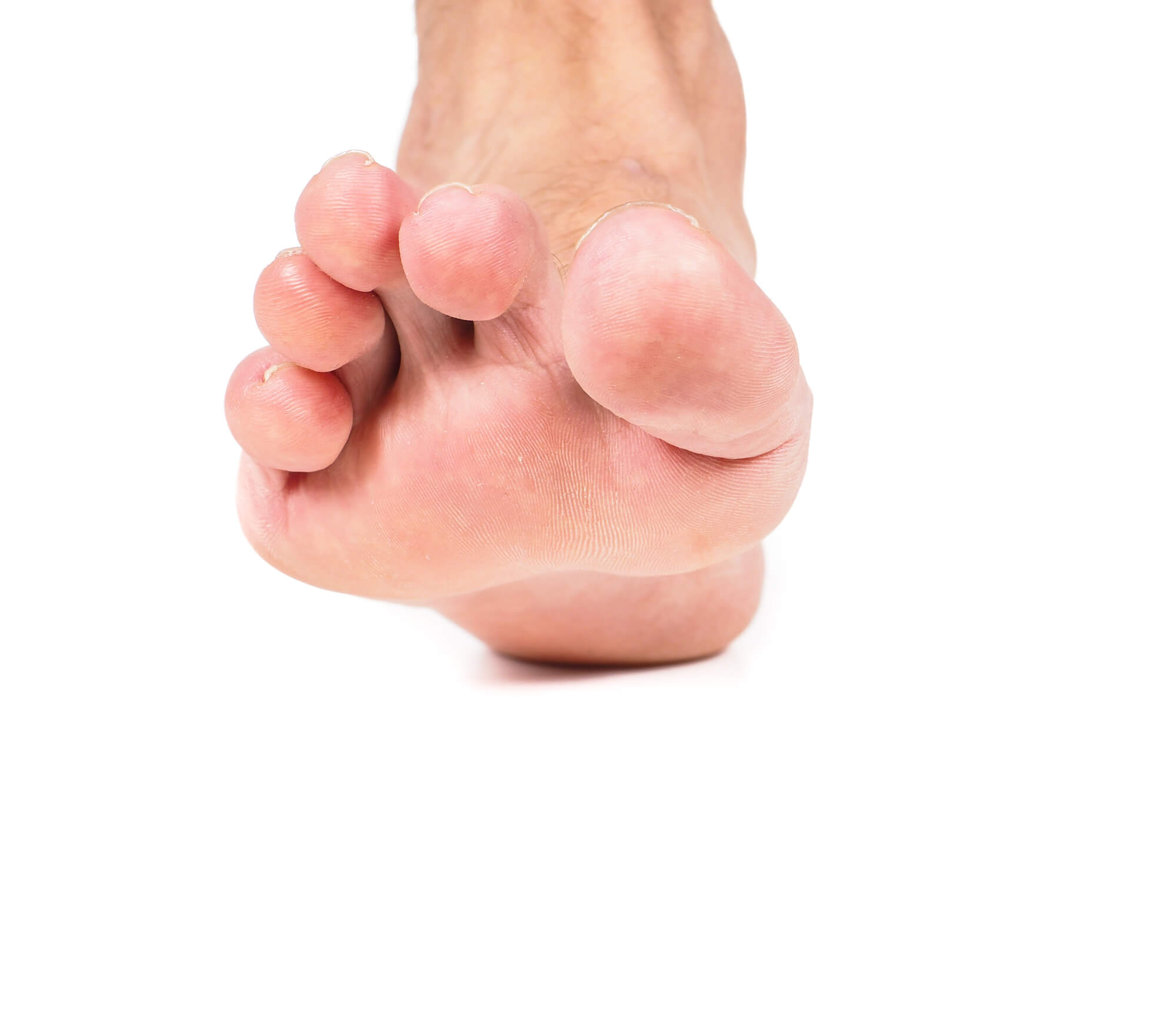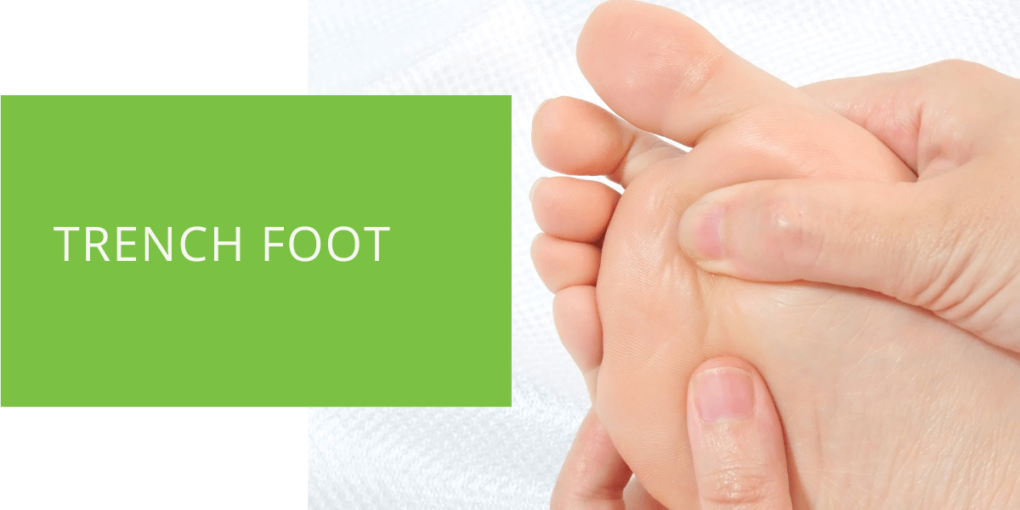Trench Foot: Causes, Symptoms & Treatment
Trench foot, also known as immersion foot syndrome, is a serious condition that can occur when the feet are exposed to cold and wet conditions for an extended period. This condition was first documented in the early 19th century when soldiers in the French army developed foot injuries after spending prolonged periods in wet and unsanitary conditions during the Napoleonic Wars. Today, trench foot is still a concern for those who work or participate in outdoor activities in cold and wet conditions. In this article, we will explore the causes, symptoms, diagnosis, treatment, and prevention of trench foot in greater detail. Understanding the risk factors and taking steps to prevent trench foot can help protect your feet and reduce the risk of this serious condition.
Causes of Trench Foot
Prolonged Exposure to Cold and Wet Conditions
Trench foot occurs when the feet are exposed to cold and wet conditions for extended periods. The cold and wet conditions cause blood vessels in the feet to constrict, reducing blood flow and leading to tissue damage. The moisture also softens the skin, making it more susceptible to injury and infection.
Risk Factors for Developing Trench Foot
Certain individuals may be more susceptible to developing trench foot. Risk factors for developing trench foot include poor circulation, tight socks or shoes, smoking, and certain medical conditions such as diabetes or peripheral artery disease. Individuals inactive or immobile for long periods may also be at an increased risk of developing trench foot.
Socks and Shoes
Wearing wet socks and shoes for long periods can also contribute to the development of trench foot. Tight socks or shoes can compress blood vessels in the feet, further reducing blood flow and increasing the risk of tissue damage. It is important to wear properly fitting socks and shoes that allow for adequate circulation and to change them frequently when wet.
Cold Injury
Trench foot is a cold injury that can occur when the feet are exposed to cold and wet conditions. Other types of cold injuries include frostbite and chilblains. Frostbite occurs when the skin and tissues freeze, while chilblains occur when the skin and tissues become inflamed due to prolonged exposure to cold, but not freezing, temperatures.

Trench Foot Symptoms
Early Symptoms
In the early stages of trench foot, individuals may experience a range of symptoms, including numbness, tingling, and a prickly or itchy sensation in the feet. These symptoms result from reduced blood flow to the feet due to constriction of the blood vessels. As the condition progresses, the feet may become swollen and discolored, and blisters may develop.
Advanced Symptoms
If trench foot is left untreated, it can lead to more serious symptoms and complications. Advanced symptoms of trench foot can include severe pain, skin that appears black or blue, and an unpleasant odor from the affected foot. In severe cases, the skin and tissue of the foot may begin to break down, leading to open sores or ulcers. In some cases, the condition can progress to the point where amputation of the affected limb is necessary.

Diagnosis of Trench Foot
Physical Examination
The first step in diagnosing trench foot is a physical examination of the foot by a podiatrist or other healthcare professional. During the examination, the healthcare professional will look for signs and symptoms of trench foot, such as skin discoloration, blisters, and swelling. They may also check the temperature of the foot and test for sensation and reflexes.
Medical History
Your podiatrist may also ask about your medical history and any risk factors for developing trench foot. It is important to provide a detailed medical history, including any past injuries or medical conditions, as this can help your podiatrist make an accurate diagnosis.
Imaging Tests
In some cases, imaging tests such as X-rays or MRI may be used to evaluate the extent of the injury and rule out other possible causes of your symptoms. Imaging tests can also help your podiatrist determine the best course of treatment for your condition.
Differential Diagnosis
Trench foot can be difficult to diagnose, as it can mimic other conditions such as frostbite and chilblains. A differential diagnosis may be needed to differentiate between these conditions. A differential diagnosis involves comparing the patient's symptoms and physical examination findings to the symptoms and physical examination findings of other conditions with similar symptoms.

Trench Foot Treatment
Removing Wet Clothing and Footwear
The first step in treating trench foot is to remove wet clothing and footwear and dry the feet thoroughly. This will help prevent further tissue damage and reduce the risk of infection. It is important to avoid exposure to cold and wet conditions during drying.
Rewarming the Feet
Once the feet are dry, they should be slowly and gently rewarmed. This can be done by immersing the feet in warm water or by using warm compresses. It is important not to use hot water or to heat the feet too quickly, as this can cause further tissue damage.
Elevating the Feet
Elevating the feet above the heart level can help reduce swelling and improve blood flow to the affected area. Elevating the feet for at least 30 minutes three to four times a day is recommended.
Medications
Over-the-counter pain medications such as ibuprofen or acetaminophen may help relieve pain and reduce inflammation. Sometimes, prescription pain medications may be needed to manage severe pain.
Topical Treatments
Topical treatments such as antibacterial ointments or creams may help prevent infection and promote healing of the affected area.
Rehabilitation
Once the acute phase of trench foot has passed, rehabilitation may be necessary to help restore function and strength to the affected foot. This may include physical therapy, exercises to improve range of motion, and wearing a brace or support to stabilize the affected foot.
Surgery
In severe cases of trench foot, surgery may be necessary to remove damaged tissue or to improve blood flow to the affected area. This is typically only done in cases where the tissue damage is severe, and other treatments have been unsuccessful.

Prevention of Trench Foot
Keep Feet Clean and Dry
One of the most important steps in preventing trench foot is to keep your feet clean and dry. This means changing your socks and shoes regularly and drying your feet thoroughly after exposure to wet conditions. It is also important to avoid wearing tight-fitting or poorly ventilated footwear, as this can trap moisture and increase the risk of trench foot.
Protect Feet from Cold and Wet Conditions
When working or participating in outdoor activities, protecting your feet from cold and wet conditions is important. This can be done by wearing waterproof footwear and using protective measures such as gaiters or socks. It is also important to take breaks and allow your feet to dry out if you have been working in wet conditions for an extended period.
Practice Good Foot Hygiene
Good foot hygiene can help to prevent trench foot by reducing the risk of infection. This includes washing your feet regularly with soap and water and trimming and cleaning your toenails. If you have a foot injury or open sore, keeping it clean and covered is important to prevent infection.
Avoid Smoking and Alcohol
Smoking and alcohol use can increase the risk of trench foot by reducing blood flow to the feet. If you are at risk of trench foot, it is important to avoid smoking and limit alcohol consumption to help improve blood flow and reduce the risk of tissue damage.
Stay Active
Regular exercise and physical activity can help to improve circulation and reduce the risk of tissue damage from prolonged exposure to cold and wet conditions. If you have a sedentary job or lifestyle, taking breaks and moving around regularly is important to help improve blood flow to the feet.
Stay Informed
Staying informed about trench foot symptoms and risk factors can help you recognize the early signs of the condition and seek prompt medical attention. It is important to seek treatment as soon as possible to prevent complications and reduce the risk of long-term damage.
Conclusion
Trench foot is a serious condition resulting from prolonged exposure to cold and wet conditions. The symptoms of trench foot can vary but can include numbness, tingling, blisters, and tissue damage. Treatment for trench foot involves rewarming the feet and improving blood flow, while prevention involves keeping feet dry and warm and maintaining good foot hygiene. If you experience symptoms of trench foot, it is important to seek medical attention from a podiatrist as soon as possible to prevent complications.

